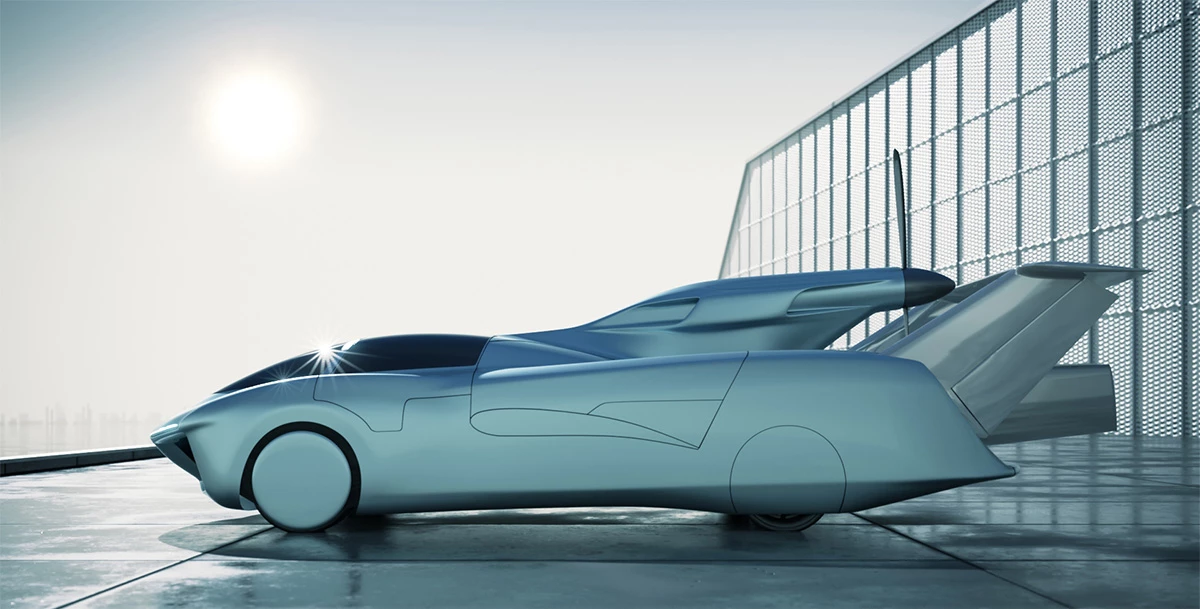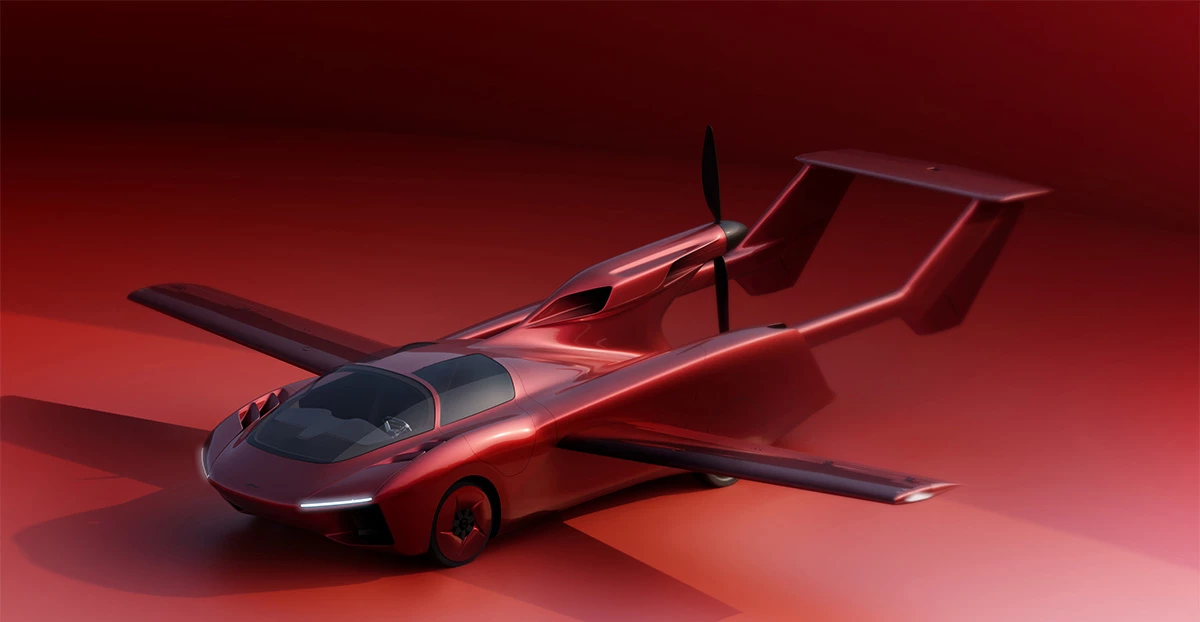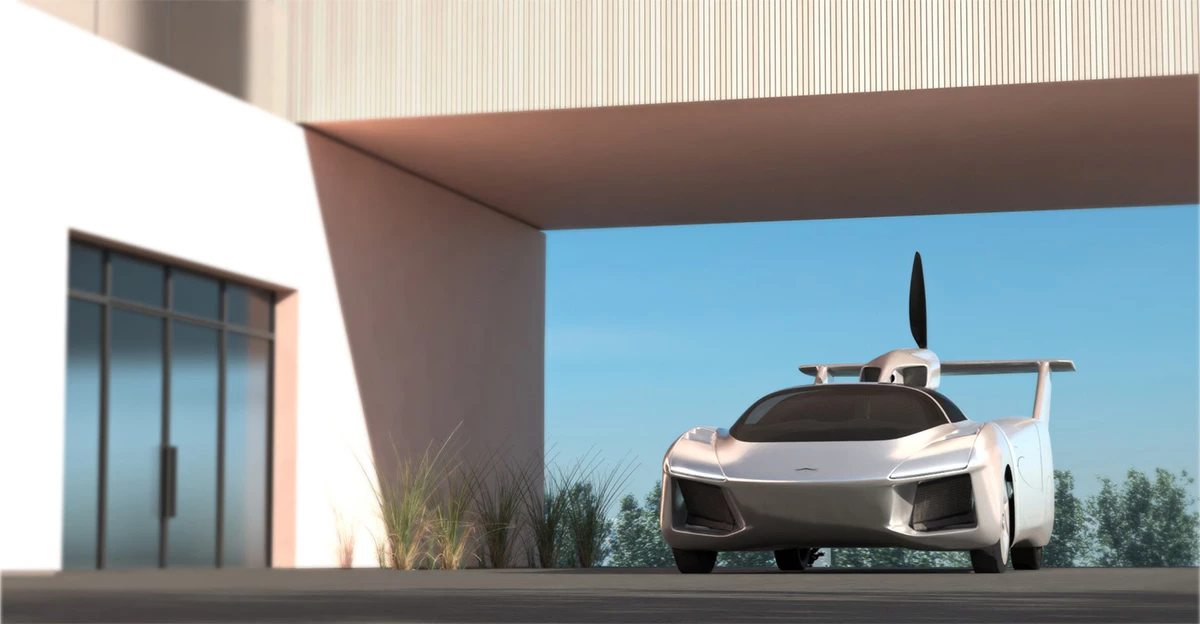More than 30 years in the making, this long-range, high-speed, flight-tested, two-seat flying car is slated to be certified later this year, with customer deliveries beginning in early 2026. The team tells us an amphibious version could follow.
Slovakia's Klein Vision has now made more than 500 test flights of its rather handsome 4th-gen AirCar prototype, and at the 2025 Living Legends of Aviation Gala Dinner in LA last week, the company showed off renders of the 5th-gen prototype that will form the basis for certification and finally go through to production.
This design, co-founder Anton Zajac tells us over a video call, is slated to fly in September. The company expects a full Part 23/CS-23 certification with EASA and/or the US FAA by late September, clearing the path for mass production and customer deliveries to begin early next year.

Of all the many flying car designs we've covered over the years, Klein's AirCar certainly stands out as a looker. It's one of the few flying cars with four wheels – three-wheelers tend to be much more popular, since they're subject to motorcycle road compliance laws rather than more stringent car laws in many areas, and can thus get away with a much more lightweight and simple construction.
It's also remarkable for its automatic transformation between fly and drive modes when you get to an airstrip. "You align the car in the direction of the runway," Zajac tells me, "and you push a button on the steering wheel. That turns the steering wheel into a yoke so you can control the ailerons. At the same time you can push or pull it to control the elevators. There are two additional pedals that serve as rudder controls."
Outside the car, the wings are lifting and unfolding and locking into place for a 27-foot (8.2-m) wingspan, and the tail is extending backward for optimal positioning in a process that takes about 80 seconds – and the AirCar's engine is disconnected from driving the wheels and instead hooked up to the pusher prop in behind the cabin. One quick walk around the car for a pre-flight check, and you're ready to hop in and take off. You can see the transition process toward the end of the video below.
The term "flying car" has been somewhat misappropriated by the eVTOL segment with its electric Jetsons-style aircraft – so Zajac, much like our friend Dezso Molnar, prefers the term 'roadable aircraft.' "If you have a driver's license, you can drive our roadable flying car," says Zajac. "If you have a PPL, private pilot's license, the AirCar has been designed in such a way that you don't have to learn anything new. The legal and testing and licensing process has been in place for dozens of years.
"The goal in building this dual-mode vehicle," he tells me, "was to build a sports car that really behaves like a sports car, that really looks and drives like a sports car. And in aircraft mode, that behaves exactly like an aircraft with zero compromise."

Specs and performance
Where the old prototype used a 140-horsepower motorcycle engine, the production machine offers three options, all 3.2-liter, 120-degree V6 motors sourced from South African company Adept Airmotive. The naturally aspirated base model will offer 280 horsepower, and the top-of-the-line will be a 340-horsepower twin turbo.
The production model moves to a monocoque frame instead of welded tubes, so it's lighter and stronger than the 4th-gen machine. And the performance improves considerably as a result. "Cruising speed in the air is 135 knots," says Zajac, "which is 155 miles per hour (249 km/h). When you're on the road, it's a sports car and you can easily go 200 km/h (124 mph), which is enough to get you a high-range speeding ticket in most countries. It doesn't have oxygen tanks installed, so the ceiling of this car is 10,000 ft – but we could easily install that and it'd have a ceiling of 18,000 ft."
Between its three fuel tanks, the AirCar can carry up to 160 liters (35.2 gal) of high-octane gasoline. "In the air, you can fly about 1,000 km (620 miles)," says Zajac. "As a car, you can drive up to 800 km (497 miles)."
Those are pretty impressive numbers – this is a true interstate touring machine that can cut long-distance commute times or make easy work of island-to-island hops anywhere a runway or grass strip is available. You can fill it up at more or less any gas station, and park it in a standard spot rather than hiring a hangar. "It's two meters (6.6 ft) wide in car mode," says Zajac, "and five meters (16 ft) long... More or less like a Mercedes S-Class."
How much to own one?
Price-wise ... Well, it's more like an aircraft than a car. "The price is in the standard four-seater aircraft range," Zajac tells me, "between US$800,000 to $1.2 million, depending on the engine and the level of luxury in the cockpit. We are expecting to be able to ship the first pieces in Q1, 2026."
It'll be a pretty remarkable achievement for this small company, whose other co-founder and CTO Stefan Klein used to furtively build planes in a garage with his dad, hiding them from the communist government in Czechoslovakia in the early 80s. "He was dreaming about freedom," Zajac tells me. "The communists were afraid that people would fly over the border of the Iron Curtain, so these were illegal projects."
And as sleek as Klein Vision's AirCar looks, far less development money has gone into it than, say, the Terrafugia Transition. "You no longer hear about that," says Zajac, "When you look at that car, it has very small wheels, and the mechanism of folding the wings is such that the center of gravity is very high. It's relatively unstable when you turn right or left, or when there's a side wind. Terrafugia spent $250 million building it – thanks to a federal grant from the Department of Defense, because it has some potential military applications. Our budget was two orders of magnitude lower. And we did it!"

More seats and amphibious capabilities
The company has some interesting plans for what's next – Zajac tells me the two-seat cabin can relatively easily be reworked into a three-seater without modifications to the exterior dimensions, with the pilot in the middle and two passengers set a little further back and out to the sides, just like McLaren's Speedtail supercar. "We also have models of a four-seat version of this flying car," says Zajac.
And then, there's the amphibian ... "We are thinking," he tells me, "of a three-mode vehicle that would be capable of landing and moving on water. An amphibious flying car." This would obviously require some waterproofing, but the wheels wouldn't need to be pulled up and out of the way, since Klein wouldn't be going for speedboat-type performance. But the ability to operate from water would open up a ton of new destinations and make the AirCar an even more versatile proposition.
When might we see that? "If this flying car becomes a success," says Zajac, "it'll definitely accelerate the process. A three-mode vehicle would be very unique, and we are very motivated. I'm not going to give you a time scale, but hopefully even I will be alive! (laughs) Maybe within the next five years."
We'll drink to that!
Source: Klein Vision





